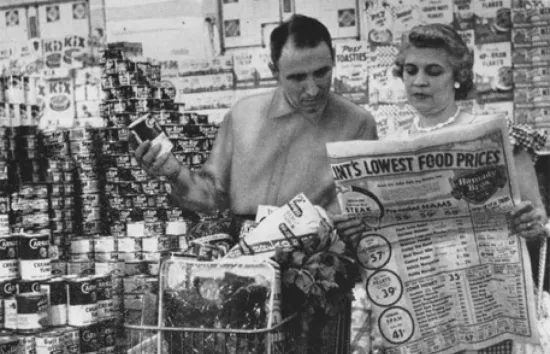The first self-service grocery store, Piggly Wiggly, opened in Memphis in 1916; the first supermarkets opened in the early 1930s. As the American middle class increasingly relocated to suburbs—farther and farther from traditional markets—in the 1930s, ʼ40s, and ʼ50s, supermarkets became the ideal spaces for consumers to buy food and other household goods. Shoppers pushed carts past loaded shelves, choosing from scores of brands.
Without clerks, stores relied on package visibility to sell their products. No material did visibility better than Cellophane. From the 1920s on, manufacturers and stores wrapped products from food to clothing in Cellophane. The transparent film allowed customers to evaluate items in before purchase, and the modern wrapping protected the contents from contamination and moisture.
Additional content in the Hagley Digital Archive:




